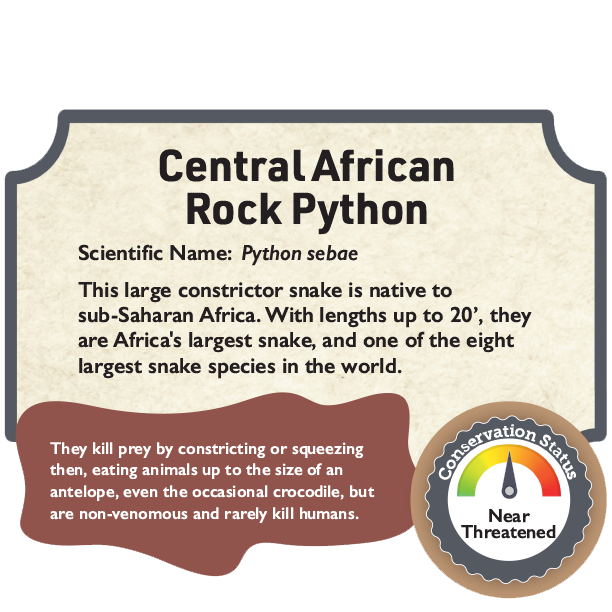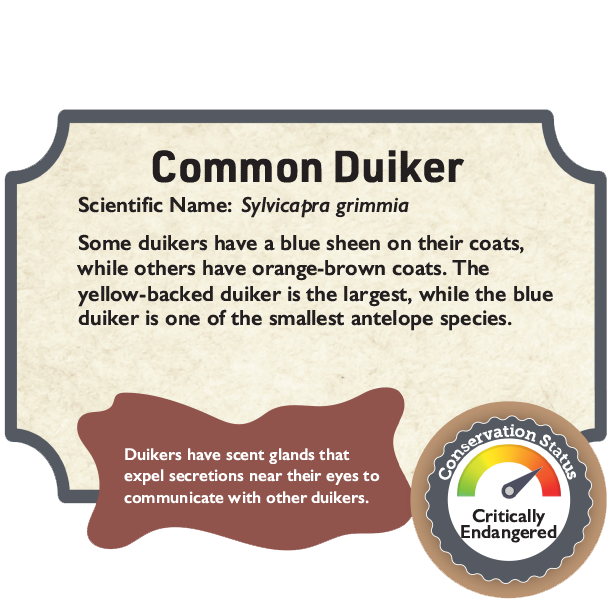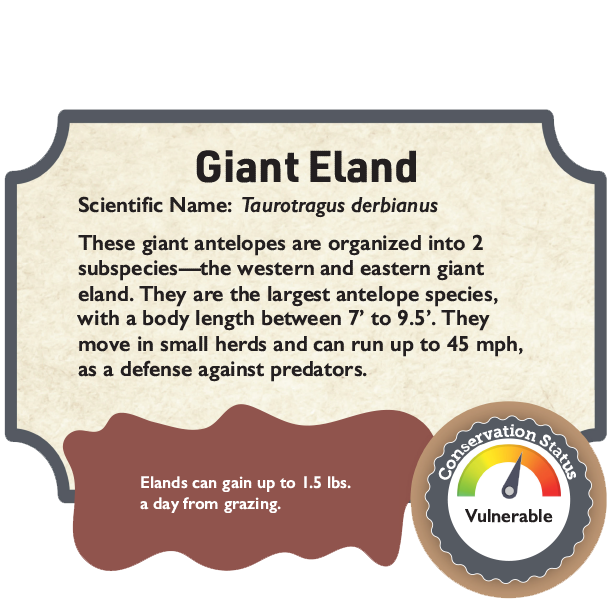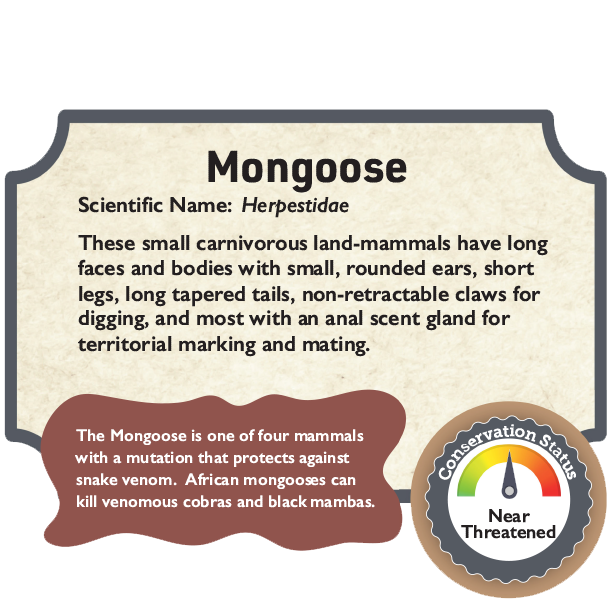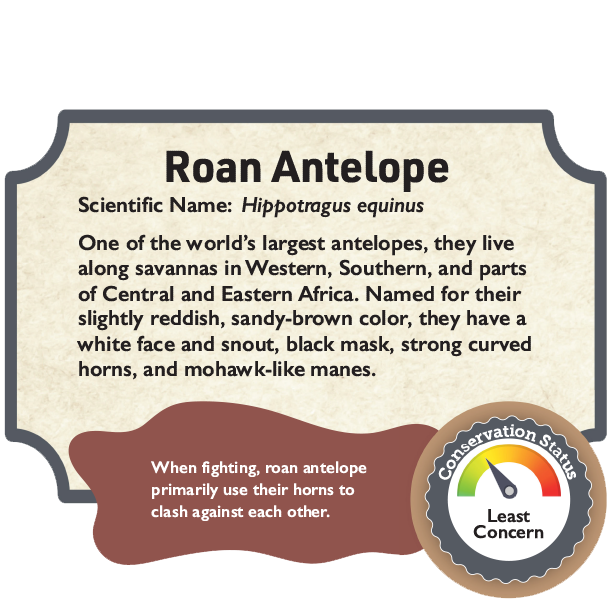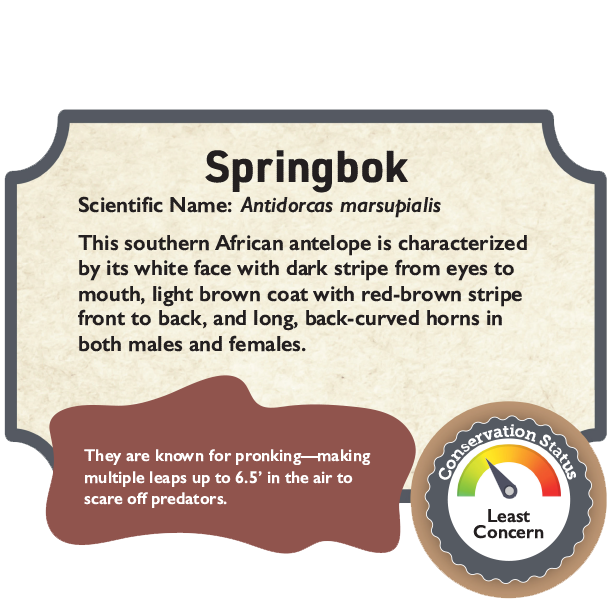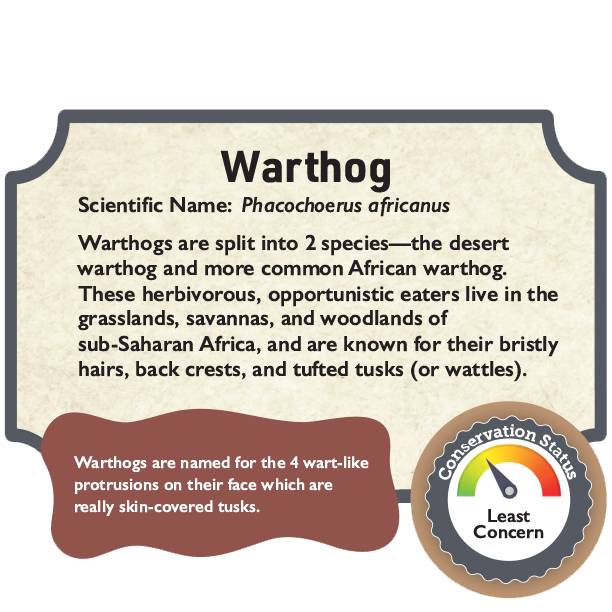
-

Hippopotamus
Did You Know? Hippos can hold their breath for five minutes.
-

Lion
Did You Know? A lion’s roar can be heard five miles away.
-

Crocodile
Did You Know? Crocodiles can go months without eating.
Africa has the largest number of megafauna species, as it was least affected by global extinctions during the Pleistocene era. The region has the world’s most diverse and largest combination of population density and “freedom” of wild animals, with large carnivore and herbivore populations ranging freely on open non-private plains. Famous African safari animals include the iconic “Big Five”—lions, African elephants, leopards, rhinoceros, and African buffalos—along with other African species such as antelopes, baboons, zebras, hyenas, crocodiles, ostriches, and vultures. Keep your eye out for buffalos, wildebeests, gazelles, giraffes, antelopes, lions, leopards, and zebras!
Reptiles and amphibians represent an important part of aquatic and terrestrial ecosystems in the American Southwest. Southwestern invertebrates and microorganisms are highly diverse and perform important functions like pollination. The American Southwest region probably has the greatest diversity of mammal species in the country. Keep your eye out for deer, armadillos, snakes, and bison!
Fun Fact:
A giraffe’s heart is over 2 feet long and weighs up to 25 pounds—powerful enough to pump blood all the way up its 6-foot-long neck to its brain!
Meet the African Region’s Native Species














